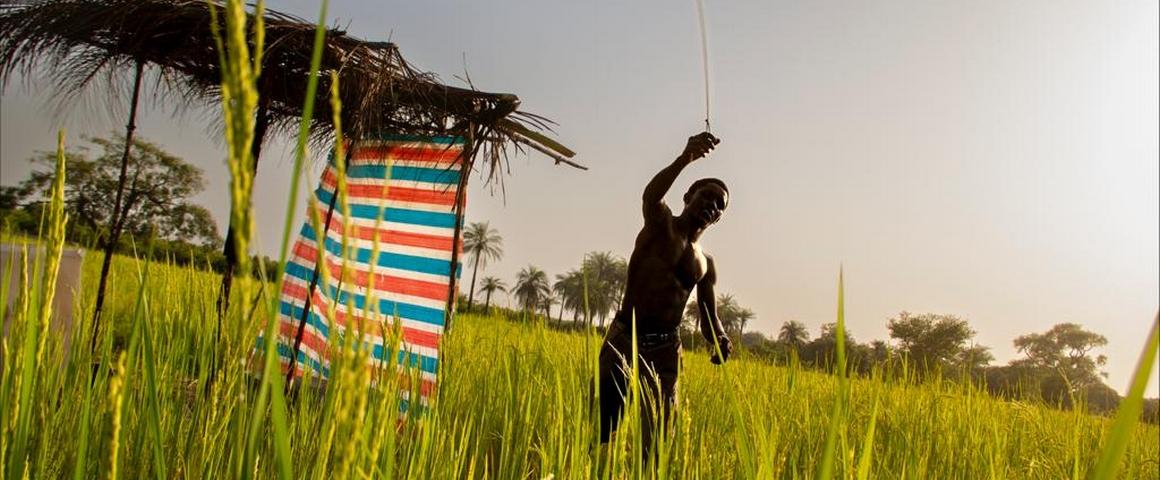Institutional news 24 November 2025
- Home
- Press area
- Press releases
- Inventing the rice sector of the future
Sustainable rice growing by 2033

Man in a rice field in Casamance (Senegal), scaring birds away in the runup to harvest time © R. Belmin, CIRAD
CIRAD presented its new rice roadmap at an event at the 2023 Paris International Agricultural Show, co-organized by CIRAD and AFD (replay, in French). The sector, which needs to satisfy ever-growing global demand, faces a growing scarcity of both land and water.
To address these issues, CIRAD will be rolling out four priority lines of research between now and 2033, which will guide its work on rice systems:
- Make rice systems more sustainable, thanks to the agroecological transition
- Contribute to sustainable management of rice systems by managing water
- Improve and promote rice quality
- Help to adapt rice growing to global changes.
These ambitions will be central to CIRAD's partnerships with the main rice producing and consumer countries. In sub-Saharan Africa in particular, rice is the second-leading cereal in the human diet, after maize. The region's dependence on imports and the instability of global markets are detrimental to its food sovereignty. In the zone, CIRAD is determined to contribute to the development of local rice value chains, but is also pushing for crop diversification, banking on other local food crops to reduce dependence on rice.
CIRAD's work on rice involves:
- 60 scientists in 11 research units, from 13 fields ranging from molecular genetics to socioeconomics
- four platforms in partnership for research and training (ASEA in Southeast Asia, SPAD in Madagascar, ISA in West Africa and PP-AL in Latin America) covering some 20 countries.
CIRAD works with more than 70 partners worldwide, contributed to 200 scientific publications in journals with impact factor between 2006 and 2020, and shares its collections and genome resources, including more than 3000 sequenced rice accessions, with its partners.



























